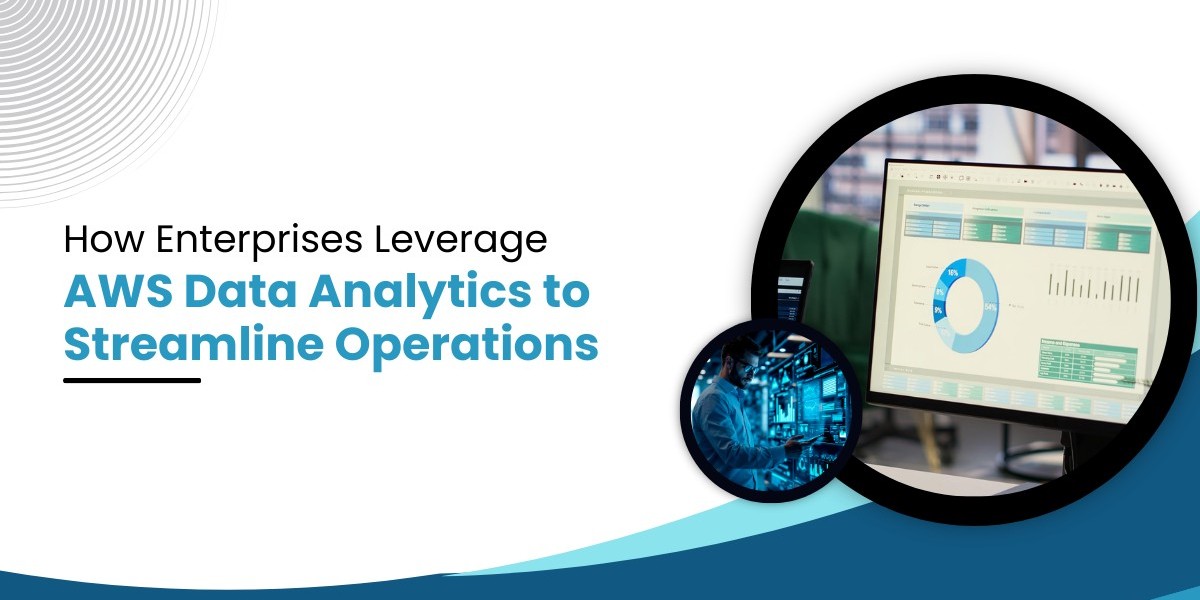In 2023, the global data analytics market was valued at $11.98 billion and is projected to grow at a compound annual growth rate (CAGR) of 23.1% from 2024 to 2030. This surge underscores the increasing reliance on data-driven insights to enhance operational efficiency, product quality, and overall competitiveness in the manufacturing sector. For plant managers, understanding and implementing manufacturing data analytics is no longer optional; it is essential for staying ahead in a rapidly evolving industry.
Understanding AWS Data Analytics Services
Amazon Web Services (AWS) offers a comprehensive suite of data analytics services designed to help enterprises collect, process, analyze, and visualize data at scale. These services are purpose-built to handle various data types and analytics workloads, enabling organizations to derive actionable insights from their data.
Key AWS data analytics services include:
Amazon Redshift: A fully managed data warehouse service that allows enterprises to run complex queries and perform analytics on large datasets.
Amazon Athena: An interactive query service that enables users to analyze data directly in Amazon S3 using standard SQL, without the need for data loading or transformation.
Amazon Kinesis: A platform for real-time data streaming that enables enterprises to collect, process, and analyze streaming data at scale.
AWS Glue: A fully managed ETL (Extract, Transform, Load) service that simplifies data preparation for analytics.
Amazon QuickSight: A scalable business intelligence service that allows users to create and publish interactive dashboards and reports.
Benefits of Using AWS Data Analytics Services
1. Scalability and Flexibility
AWS data analytics services are designed to scale with the growing data needs of enterprises. Whether it's handling large volumes of data or accommodating fluctuating workloads, AWS provides the flexibility to scale resources up or down as needed. This elasticity ensures that enterprises can manage their data analytics workloads efficiently without over-provisioning resources.
2. Cost Efficiency
With AWS, enterprises only pay for the resources they use, allowing for cost-effective data analytics solutions. Services like Amazon Redshift and Amazon Athena offer pricing models that align with usage, enabling organizations to optimize their analytics costs. Additionally, AWS provides tools to monitor and manage costs, ensuring that enterprises can maintain budget control while leveraging advanced analytics capabilities.
3. Real-Time Analytics
AWS data analytics services support real-time data processing, enabling enterprises to gain immediate insights into their operations. For instance, Amazon Kinesis allows organizations to process streaming data in real-time, facilitating timely decision-making and responsiveness to changing business conditions.
4. Integration with Machine Learning
AWS seamlessly integrates data analytics with machine learning services, allowing enterprises to apply predictive analytics and advanced data modeling to their datasets. Services like Amazon SageMaker enable organizations to build, train, and deploy machine learning models, enhancing their ability to forecast trends and make data-driven predictions.
5. Security and Compliance
AWS adheres to rigorous security standards and compliance certifications, ensuring that enterprise data is protected. Features like data encryption, access controls, and audit logging help organizations maintain data privacy and meet regulatory requirements.
Use Cases of AWS Data Analytics Services in Enterprises
1. Retail: Enhancing Customer Experience
Retailers leverage AWS data analytics services to analyze customer behavior, optimize pricing strategies, and personalize marketing efforts. By processing data from various sources, such as point-of-sale systems and online interactions, retailers can gain insights into customer preferences and purchasing patterns. This enables them to tailor their offerings and improve customer satisfaction.
2. Healthcare: Improving Patient Outcomes
Healthcare organizations utilize AWS data analytics services to analyze electronic health records, medical imaging data, and patient-generated data. By applying advanced analytics, healthcare providers can predict patient outcomes, personalize treatment plans, and optimize resource allocation, leading to improved patient care and operational efficiency.
3. Finance: Managing Risk and Compliance
Financial institutions use AWS data analytics services to monitor transactions, detect fraudulent activities, and ensure regulatory compliance. By analyzing transaction data in real-time, banks can identify anomalies and take proactive measures to mitigate risks, safeguarding both their operations and customers.
4. Manufacturing: Optimizing Production Processes
Manufacturers employ AWS data analytics services to monitor equipment performance, predict maintenance needs, and optimize production schedules. By analyzing data from sensors and production systems, manufacturers can reduce downtime, improve product quality, and enhance overall operational efficiency.
Implementing AWS Data Analytics Services: Best Practices
1. Define Clear Objectives
Before implementing AWS data analytics services, enterprises should define clear objectives aligned with their business goals. Whether it's improving customer experience, reducing operational costs, or enhancing product quality, having specific goals helps in selecting the appropriate services and designing an effective analytics strategy.
2. Ensure Data Quality
High-quality data is essential for accurate analytics. Enterprises should implement data governance practices to ensure data accuracy, consistency, and completeness. This includes data cleansing, validation, and standardization processes to maintain the integrity of analytics outcomes.
3. Leverage Automation
AWS data analytics services offer automation capabilities that can streamline data processing and analysis workflows. By automating tasks such as data ingestion, transformation, and reporting, enterprises can reduce manual efforts, minimize errors, and accelerate time-to-insight.
4. Monitor and Optimize Performance
Continuous monitoring of data analytics workloads is crucial to ensure optimal performance. AWS provides tools like Amazon CloudWatch to monitor resource utilization, set alarms, and analyze logs. Enterprises should regularly review performance metrics and optimize configurations to maintain efficient operations.
5. Foster a Data-Driven Culture
To fully realize the benefits of AWS data analytics services, enterprises should foster a data-driven culture across all levels of the organization. This involves training employees on data literacy, promoting collaboration between departments, and encouraging data-informed decision-making.
Conclusion
AWS data analytics services offer enterprises a powerful suite of tools to transform raw data into actionable insights. By leveraging these services, organizations can enhance operational efficiency, improve decision-making, and drive innovation. As data continues to play a pivotal role in business success, adopting AWS data analytics services positions enterprises to thrive in a data-driven future.








